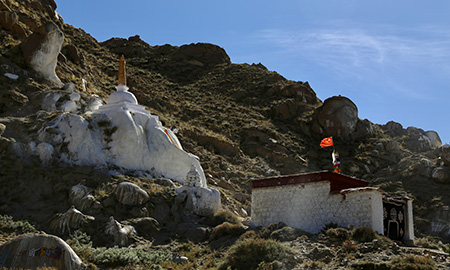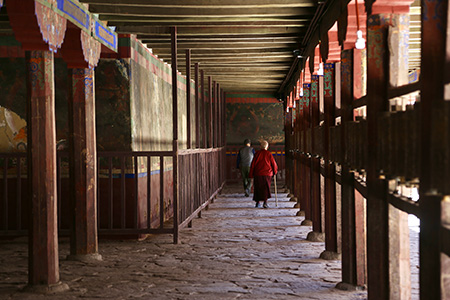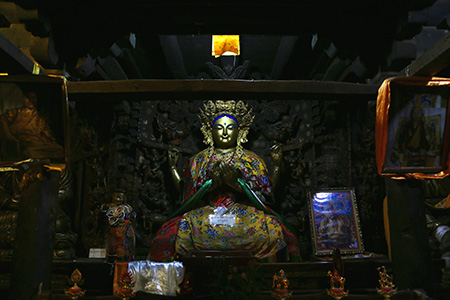Fieldwork
Stupa, Dharma, and Buddha: The Visual and Material Life in Tibetan Monasteries
My MPhil dissertation explores the Tibetan Buddhist statues collected in the Cambridge University Museum of Archaeology and Anthropology (MAA), where I study the social life of Buddhist statues through their travels between provenance and museum. Although the research mainly focuses on objects collected from the MAA, I conducted preliminary fieldwork in Tibet during May 2021, where I visited 15 monasteries studying the monastic structures and Buddhist figures that have profoundly informed my current research. As my current research focuses on the social change in the travel of Buddhist statues between provenance to museums, the preliminary fieldwork allowed me to understand the life stage of Buddhist figures along with other Buddhist objects situated in their original monastic locations.
In Tibetan monasteries, materiality is an important aspect resembling the Buddha’s teaching. However, physical things are also intertwined with wider themes such as statehood, symbolism, and political economy through visual and material embodiments. In the following photos, I will present those interactions with three elements of Tibetan Buddhism: the Stupa, the Dharma, and the Buddhist Figure with those respective themes. Combining the three aspects, I try to showcase some of the material and visual life of Tibetan Buddhist monasteries with their social and political implications.
Stupa and State
This photo depicts the presence of the Chinese flag situated on the rooftop of the shrine for Songka Stupa (8th Century AD), Dranang County. A Stupa is a semi-spherical monument as a memorial and the housing for Buddhist relics, manuscripts, and sometimes smaller statues along with other offerings. The stupa often serves as the tallest monument that often visually dominates the landscape of many monasteries. In the case of this stupa, the spiritual life in the Buddhist life witnesses a powerful presence from the state. Visually, the Chinese flag has dominated the landscape of both the shrine and the stupa. By placing the Chinese flag on the most conspicuous location such as the rooftop of the shrine, a claim of state sovereignty is manifested by visually replacing the status of the stupa with the national flag. The power of statehood, as the photo exemplifies, integrates with the everyday life of Tibetan temples through such a visual presentation.
Revolving and Chanting around the Cloister of the Great Hall
This photo depicts two pilgrims revolving clockwise around the Great Hall of Samye Monastery, south of Lhasa. The movement of pilgrims around the cloister of the main hall represents the daily life of accumulating the Dharma. The Dharma is the doctrine in Buddhist teachings through the righteousness of self-conduct. Although the Dharma itself is not a physical entity, through spatial and material interactions such as chanting the mantra while revolving around the monastery’s great hall filled with Dharma Wheels by spinning it, the body and mind are able to materialise the Dharma through the symbolism of the wheel as its material and spatial embodiments.
Bodhisattva Avalokitesvara on the altar with offerings
A gilt brass statue of Avalokitesvara in Shalu Monastery, Shigatse. This statue is dressed in silk brocade and is served with various offerings. In Tibetan monasteries, statues are often considered living embodiments of the Buddha. Therefore, offerings toward the Buddhist figures become a way of personifying the Buddhist figure by socially interacting with it. Moreover, the money offered to the statue also contains a 100 note US dollar amongst the Chinese RMB. Could this be an offer from a US tourist, or someone brought it from the US? Why choose the US dollar out of many other currencies? Nonetheless, the presence of the US dollar in the monastery suggests the complex network of international political economy that is also integrated into the monastic life.



